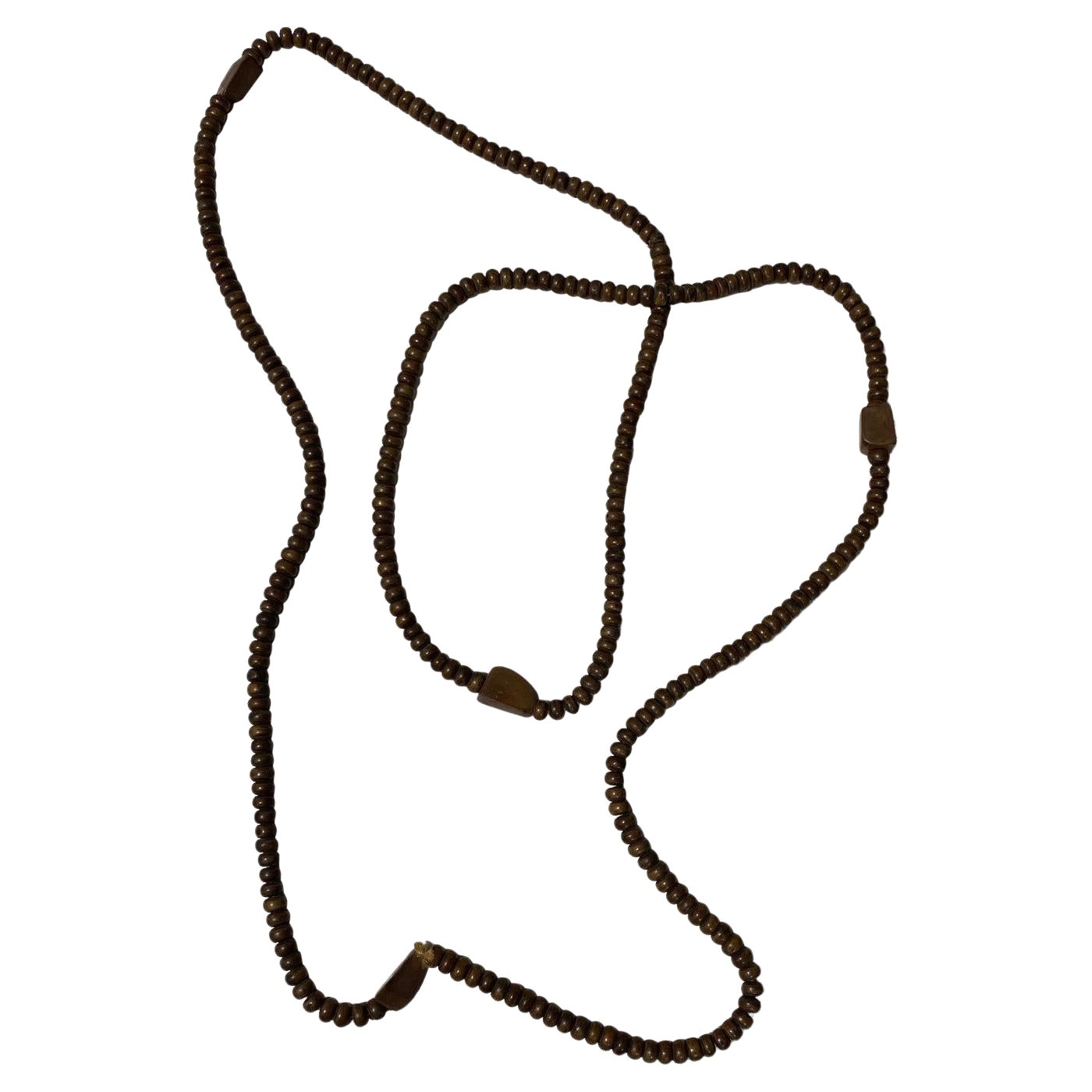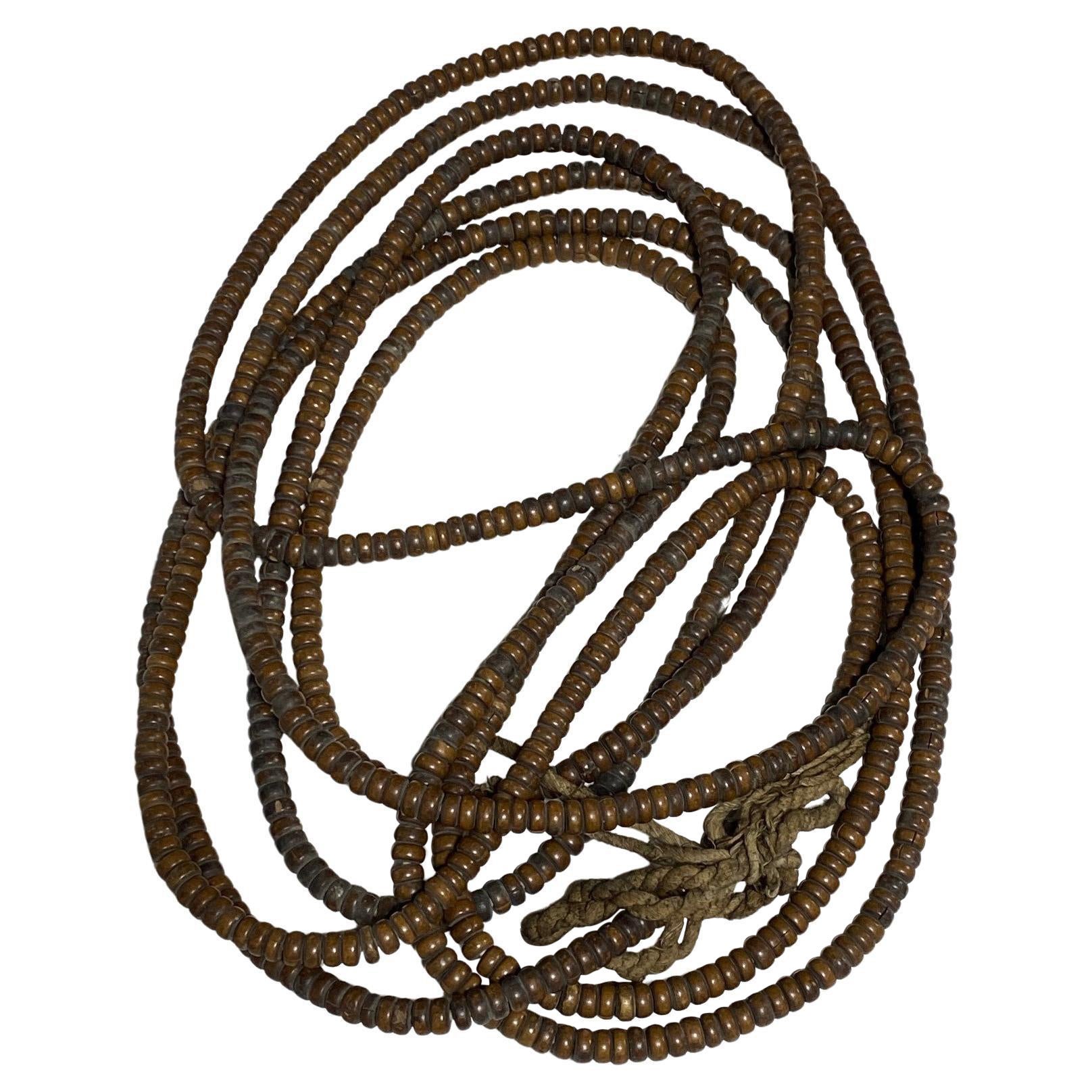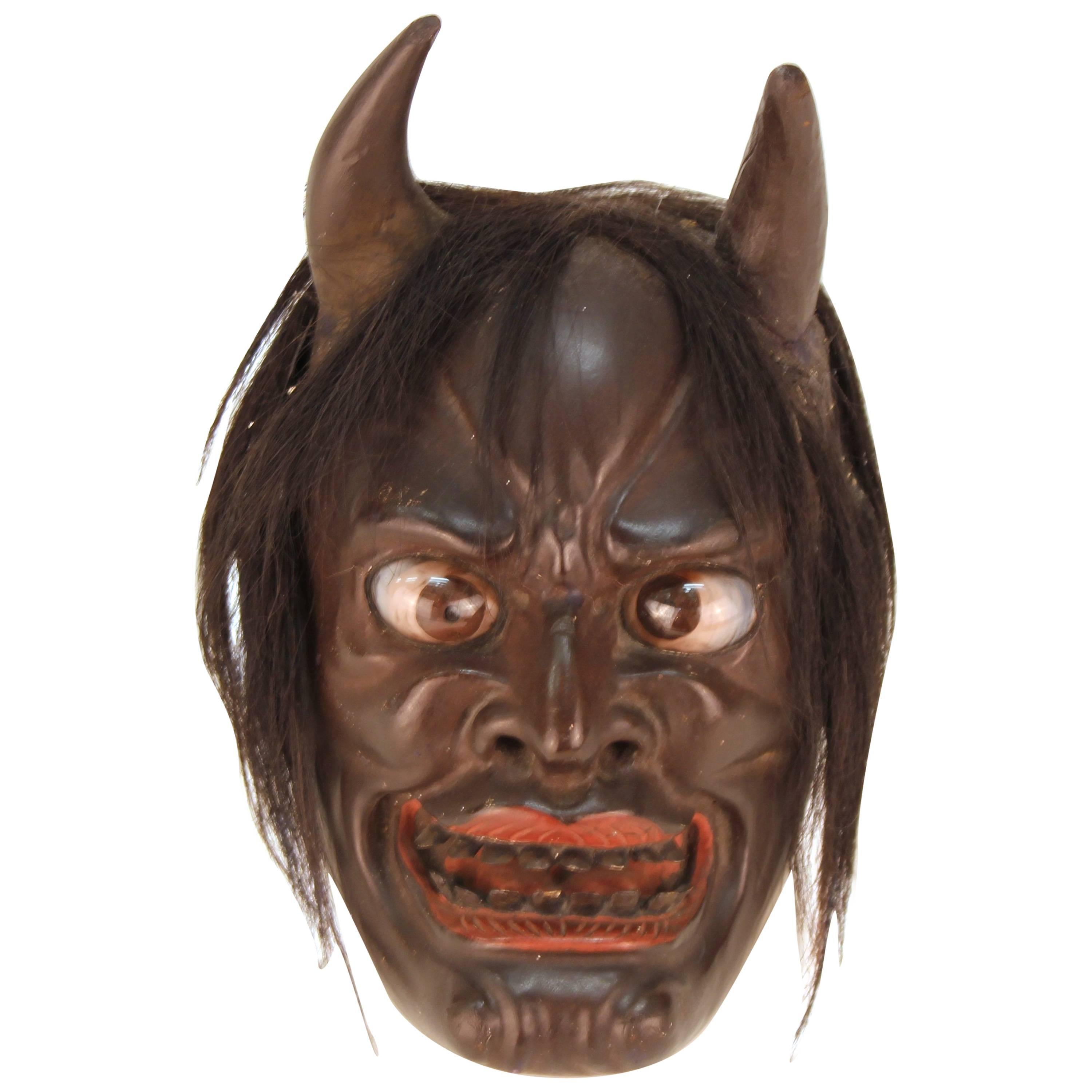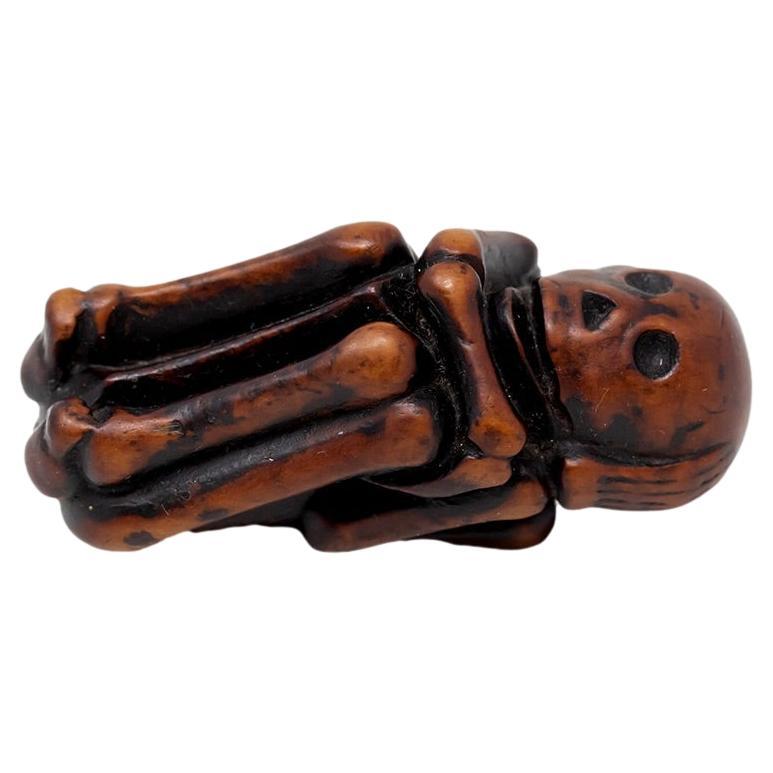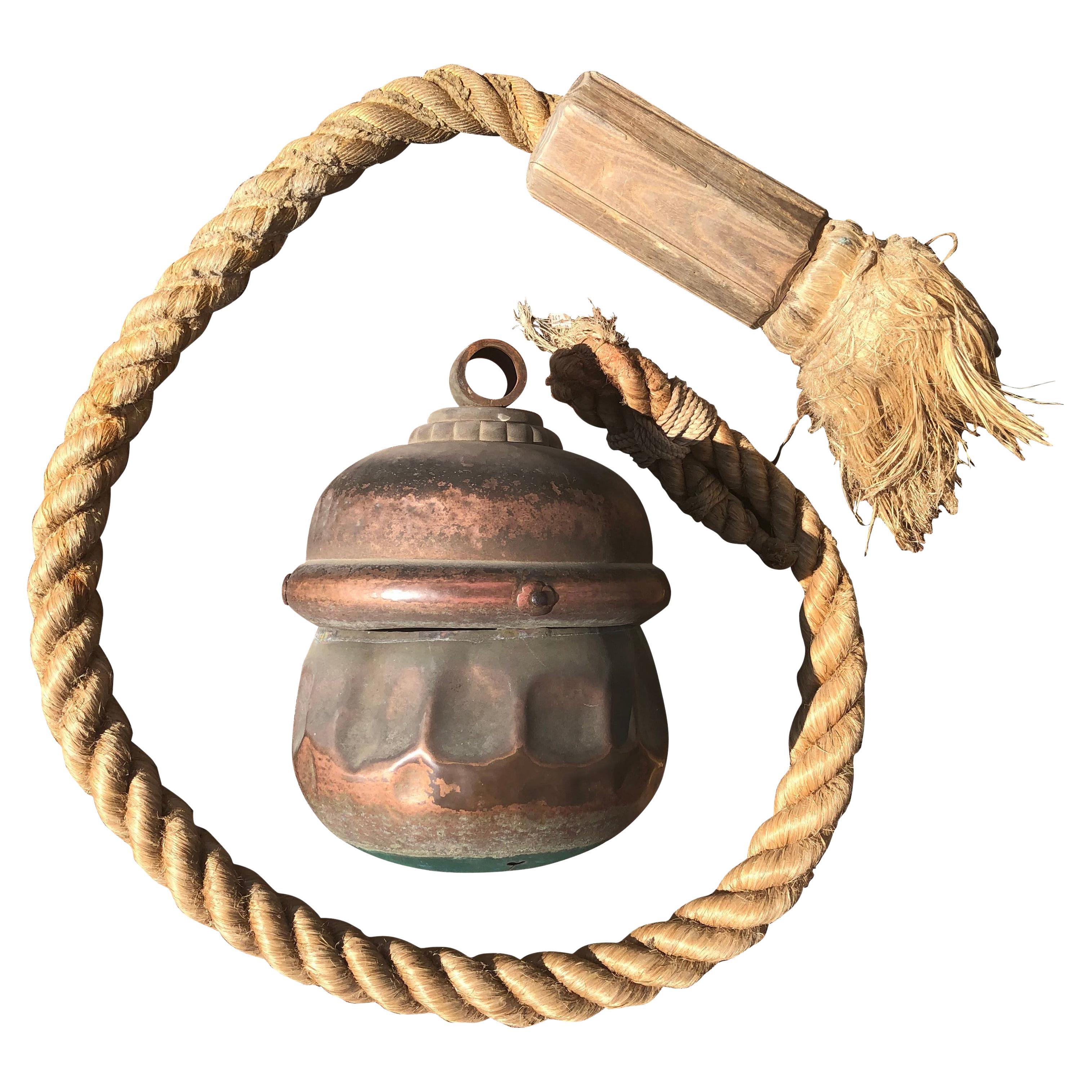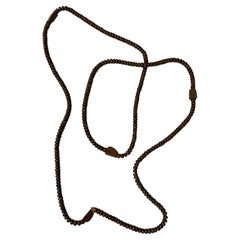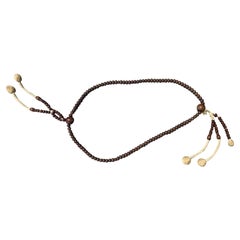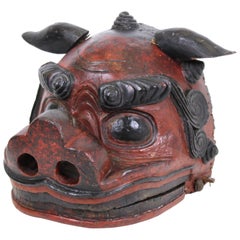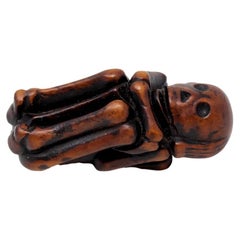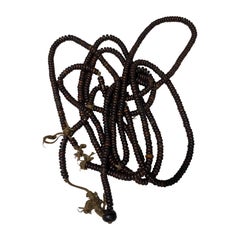
Japanese Edo Temple Shrine Buddhist Monk Juzu Prayer Beads Mala Rosary Necklace
View Similar Items
Want more images or videos?
Request additional images or videos from the seller
1 of 21
Japanese Edo Temple Shrine Buddhist Monk Juzu Prayer Beads Mala Rosary Necklace
About the Item
- Dimensions:Height: 7 in (17.78 cm)Width: 17.5 in (44.45 cm)Depth: 10.25 in (26.04 cm)
- Style:Edo (Of the Period)
- Materials and Techniques:
- Place of Origin:
- Period:
- Date of Manufacture:Mid-Later 1700s
- Condition:In very good vintage condition with natural, organic wear consistent with age and use (please see photos). Very special and unique overall.
- Seller Location:Studio City, CA
- Reference Number:1stDibs: LU2254330961442
About the Seller
4.9
Platinum Seller
These expertly vetted sellers are 1stDibs' most experienced sellers and are rated highest by our customers.
1stDibs seller since 2016
768 sales on 1stDibs
More From This SellerView All
- Japanese Temple Shrine Buddhist Monk Juzu Prayer Wood Beads Mala Rosary NecklaceLocated in Studio City, CAA truly magnificent and special work - this beautiful and exceptionally long string of Japanese handcrafted natural wood (perhaps rosewood) Buddhist Juzu mala beads with four large square-like beads called shitenshu beads said to represent the Four Heavenly Kings: Jikko-Ten, Zocho-ten, Hiromoku-ten, and Tamon-ten (Since there are four square beads, the denomination is probably Tendai or Nichiren sect). These rosary-type prayer bead necklaces were used by Buddhist monks in temple prayers / rituals and worn by Samurai as amulets of protection. We have not come across another set of Juzu beads...Category
Antique 19th Century Japanese Meiji Sculptures and Carvings
MaterialsWood
- Japanese Temple Buddhist Monk Samurai Juzu Prayer Beads Mala Rosary NecklaceLocated in Studio City, CAA truly magnificent and special work - this beautiful and exceptionally long string of Japanese hand-crafted natural wood (perhaps Rosewood) Buddhist Juzu mala beads. These rosary-type large prayer bead necklaces were used by Buddhist monks in temple prayers/rituals and worn by Samurai as amulets of protection. During the Edo period, Buddhist priests/monks and samurai warriors used to wrap the beads around their bodies and use the beads in their worshipping and meditation ceremonies. After reading the sutra once, one bead would be moved (some sects used them instead of wooden tally counters). It would take a tremendous amount of intense concentration and physical stamina to read the sutra while holding and counting/moving each individual prayer bead as well as a copious amount of time to move all the prayer beads to complete the sutra cycle. We have not come across another set of Juzu beads...Category
Antique Early 19th Century Japanese Edo Sculptures and Carvings
MaterialsWood
- Japanese Temple Shrine Buddhist Monk Juzu Prayer Wood Beads Mala Rosary NecklaceLocated in Studio City, CAA beautiful string of Japanese hand-crafted Buddhist Juzu mala beads made of natural wood. These rosary-type prayer bead necklaces were used by Buddhist mon...Category
Mid-20th Century Japanese Showa Sculptures and Carvings
MaterialsWood
- Japanese Temple Shrine Buddhist Monk Juzu Prayer Wood Beads Mala Rosary NecklaceLocated in Studio City, CAA beautiful string of Japanese hand-crafted Buddhist Juzu mala beads made of natural wood. These rosary-type prayer bead necklaces were used by Buddhist monks in temple prayers/ritua...Category
Mid-20th Century Japanese Showa Sculptures and Carvings
MaterialsWood
- Japanese Wood Gilt Lacquer Buddha Buddhist Temple Traveling Zushi Shrine AltarLocated in Studio City, CAA wonderful Japanese Buddhist portable traveling zushi shrine altar with Amida Buddha (Amitabha) concealed inside the folded wood doors. This work dat...Category
Early 20th Century Japanese Showa Sculptures and Carvings
MaterialsMetal, Gold Leaf
- Japanese Small Bronze Edo Buddhist Temple Shrine Buddha Statue Amulet SculptureLocated in Studio City, CAA gorgeous diminutive Japanese bronze temple shrine Buddha. The piece has a beautiful aged patina and a wonderful, surprisingly hefty feel to it when he...Category
Antique Early 19th Century Japanese Edo Sculptures and Carvings
MaterialsBronze
You May Also Like
- Japanese Edo Period Lion MaskLocated in New York, NYA rare Edo period (17th century-18th century) Japanese lion mask for the Gion Festival. This mask was part of a two-man costume, with one man holding the mask and the other at the back covered with fabric to perform the traditional Lion Dance...Category
Antique 17th Century Japanese Edo Sculptures and Carvings
MaterialsWood
- Japanese Edo Period Ike Mask 'Devil Face'Located in New York, NYA Japanese sculpted wood Ike mask produced during the Edo Period (1603-1868) around 1850, depicting a devil face. Highly detailed, the mask has inserted eyes and hair attached to it.Category
Antique 1850s Japanese Edo Sculptures and Carvings
MaterialsWood
- Japanese Skeleton Boxwood Netsuke Late Edo PeriodLocated in Newark, EnglandJapanese boxwood netsuke depicting a skeleton. The skeleton naturalistically carved in the foetal position in preparation for transitional burial. With...Category
Antique Mid-19th Century Japanese Edo Sculptures and Carvings
MaterialsWood, Boxwood
- Japanese Edo Period Kyogen Mask of a Nio GuardianLocated in New York, NYAn extremely rare Japanese Edo period Kyogen mask of a Nio guardian king, a ferocious native deity often associated with the Naga Dragon Kings, who convert...Category
Antique 19th Century Japanese Edo Sculptures and Carvings
MaterialsWood
- Japanese Edo Period Carved and Painted Wood PlaqueLocated in New York, NYJapanese Edo period carved and hand painted wood plaque for a Buddhist temple interior, with lotus blossoms, a crane and lotus leaf shelves to disp...Category
Antique 1850s Japanese Edo Sculptures and Carvings
MaterialsWood
- Japanese Huge 18 Inch Antique Temple Shinto Prayer Bell, Genuine Historical ItemLocated in South Burlington, VTHistorical Bell- Immediately Useable First ever to be offered A genuine temple used de-accession 96 inch prayer bell with original wooden handled rope from a shrine in Nakamura Ward, Nagoya, Japan An extraordinary opportunity to acquire, collect, use and display the largest scale 18” temple bell of this kind we have ever seen in private hands- including its original wood and hemp rope pull- a Japanese authentic hand cast copper Shinto Suzu bell. The auspicious temple shrine from which this bell comes, was founded in 1156 to honor Ojintenno, who was the 15th emperor of Japan. It was commissioned in part by Minamoto no Tametomo, who was a famous Samurai, who is known as possibly being the first samurai to commit Seppuku. Its big 18" high and 12" diameter bell including a massive hand carved wooden pull handle measuring 17 inches in length shows patina from great age, dates to the late 19th century, and was formerly rung outside a Nagoya Temple great hall where it was enjoyed by members of Japan's local Shinto communities. This bell was authentically rung at this temple shrine. We will include the original 96 inch rope pull with massive 17 inch long hand carved wooden handle. In total, this is an extraordinary copper bell which includes its rare original wood and hemp rope pull. Important: Please view the actual insitu photograph of this amazing relic before it was deaccessioned. This huge old bell dates to the late 19th century period, displays an impressive patina from age, and sounds impressive. It's lower half portion has been purposely hand-hammered by design to improve its sound- this is not damage. The Suzu Shinto bell...Category
Antique 1890s Japanese Meiji Sculptures and Carvings
MaterialsCopper
$1,440 Sale Price40% Off
Recently Viewed
View AllMore Ways To Browse
Wooden Shrine
Prayer Stand
Antique Rosaries
Rosary Antique Rosaries
Antique Rosary
Antique Rosary Rosaries
Antique Rosarys
Antique Rosaries Rosaries
Rosary Antique
Antique Prayer Stand
Wooden Prayer
Necklace On Stand
Ritual Drum
Asian Amulets
Antique Japanese Beads
Natural Wood Bag
Large Asian Drum
Antique Japanese Necklace
